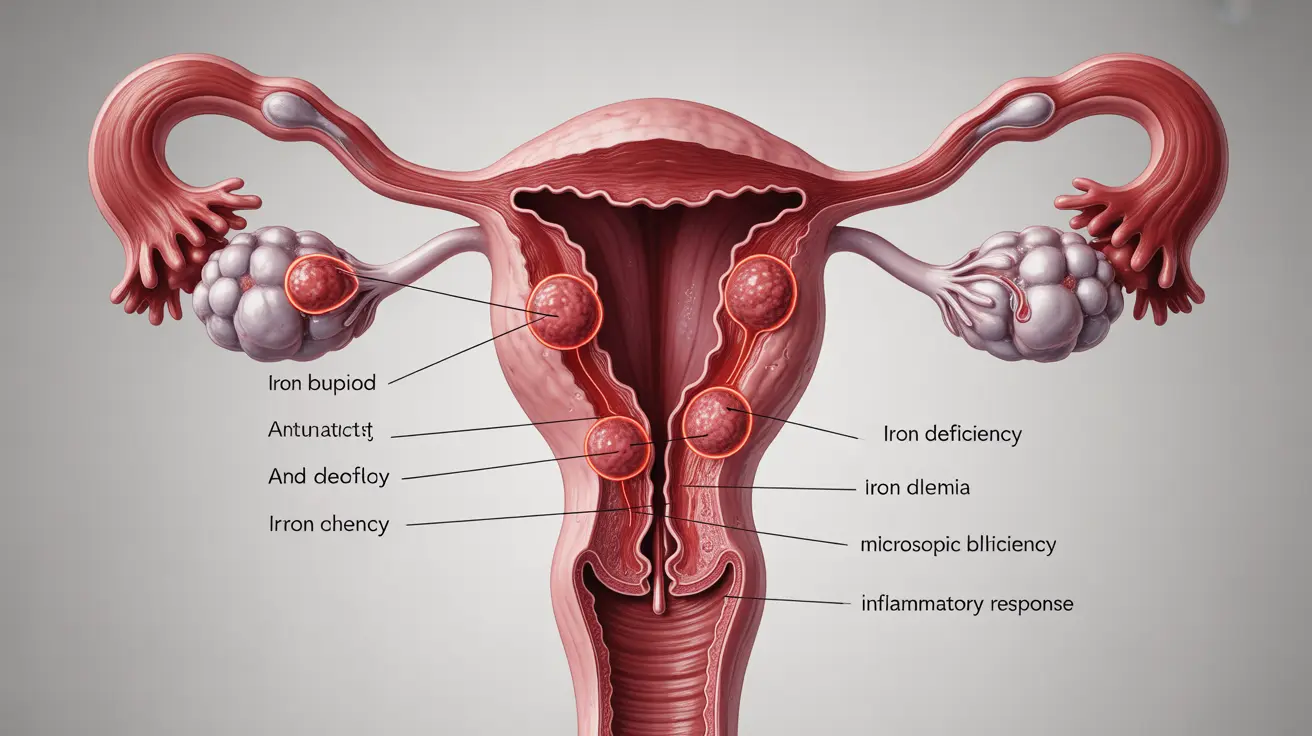Many people associate uterine fibroids with heavy menstrual bleeding, but the relationship between fibroids and anemia is more complex than commonly understood. These benign uterine growths can affect iron levels and potentially lead to anemia through various mechanisms, even when obvious heavy bleeding isn't present.
Understanding this connection is crucial for women with fibroids, as early recognition of potential anemia risks can lead to better management and prevention strategies. Let's explore the intricate relationship between fibroids and anemia, including less obvious ways these conditions interact.
How Fibroids Can Impact Iron Levels
While heavy menstrual bleeding is the most well-known way fibroids can lead to anemia, there are several other mechanisms through which fibroids can affect iron levels in the body:
Chronic Microscopic Bleeding
Some fibroids, particularly those located within the uterine wall or cavity, can cause persistent, low-level bleeding that may not be immediately noticeable but can gradually deplete iron stores over time. This subtle blood loss might only be detected through medical testing.
Inflammatory Response
The presence of fibroids can trigger an inflammatory response in the body, which may affect iron metabolism and absorption. This inflammatory state can interfere with the body's ability to properly utilize iron, even when dietary intake is adequate.
Recognizing the Signs of Fibroid-Related Anemia
Being aware of anemia symptoms is crucial, especially for women with diagnosed fibroids. Key indicators include:
- Unusual fatigue and weakness
- Shortness of breath during normal activities
- Pale skin and mucous membranes
- Dizziness or lightheadedness
- Cold hands and feet
- Difficulty concentrating
Diagnostic Approaches and Monitoring
Healthcare providers typically use several methods to assess the relationship between fibroids and anemia:
- Complete blood count (CBC) tests
- Iron studies including ferritin levels
- Imaging studies to evaluate fibroid location and size
- Symptom tracking and menstrual cycle monitoring
Treatment Strategies and Management
Addressing both fibroids and anemia often requires a comprehensive approach:
Managing Iron Levels
Treatment typically begins with addressing any iron deficiency through:
- Oral iron supplementation
- Intravenous iron therapy when necessary
- Dietary modifications to increase iron intake
- Regular monitoring of iron levels
Addressing Fibroid Issues
Managing the underlying fibroid condition may involve:
- Hormonal treatments to control fibroid growth
- Minimally invasive procedures
- Surgical options when necessary
- Regular monitoring of fibroid size and symptoms
Frequently Asked Questions
Can uterine fibroids cause anemia even if I don't have heavy menstrual bleeding? Yes, fibroids can cause anemia without obvious heavy bleeding through mechanisms such as chronic microscopic bleeding, inflammatory responses that affect iron metabolism, and subtle blood loss that may go unnoticed.
What are the common symptoms of anemia caused by fibroids? Common symptoms include persistent fatigue, shortness of breath, pale skin, dizziness, difficulty concentrating, and cold extremities. These symptoms may develop gradually and can be easily overlooked.
How is anemia from fibroids diagnosed and treated? Diagnosis involves blood tests including CBC and iron studies, along with imaging to assess fibroids. Treatment typically combines iron supplementation with appropriate fibroid management strategies, tailored to each patient's specific situation.
What treatment options are available to manage fibroids and reduce the risk of anemia? Treatment options include hormonal therapies, iron supplementation, minimally invasive procedures, and sometimes surgery. The approach depends on factors such as fibroid size, location, and severity of symptoms.
Are there cases where fibroids affect iron levels without causing obvious bleeding? Yes, fibroids can affect iron levels through inflammatory responses and microscopic bleeding that isn't visible. Regular monitoring of iron levels is important for women with fibroids, even without noticeable bleeding.




